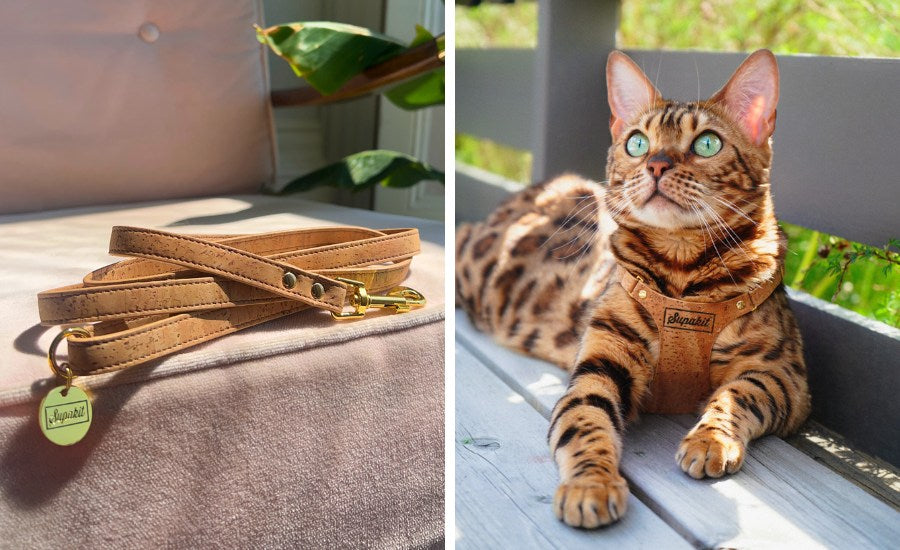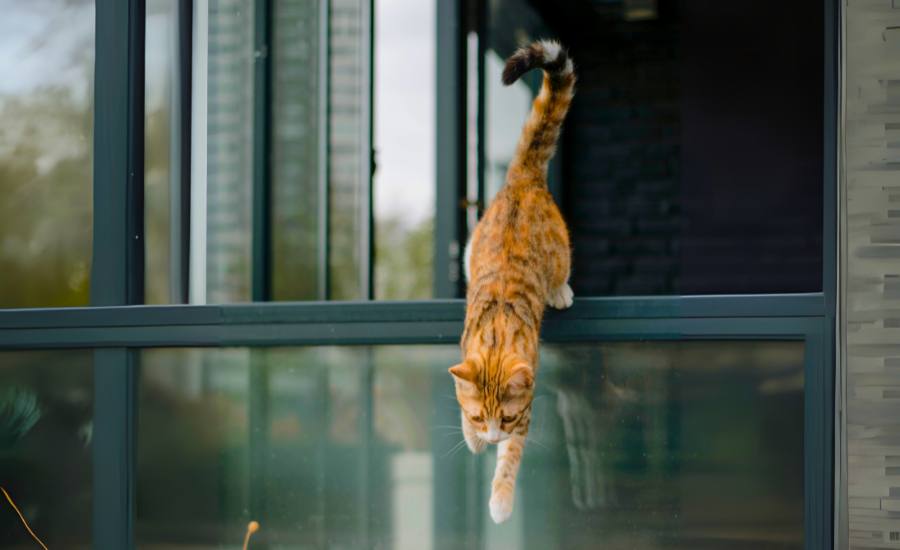Is My Cat's Harness Escape Proof? The Secret To Stopping Harness Escapes
"Is my cat's harness escape-proof?" is one of the most common questions we receive here at Supakit. As cat harness specialists, we understand the importance of keeping your curious kitty safe and secure, but it may surprise you to learn that a harness is just one part of preventing harness escapes (and spoiler alert: there's no such thing as an 'escape proof' cat harness!).
In this guide, we’ll cover the five essential steps to prevent your cat from escaping from their harness. From choosing the right harness to mastering advanced techniques that are often overlooked, these tips will help keep even the most determined escape artist safe and secure.
Watch our YouTube video, or scroll down to read the article!
Step 1: Pick A Well-Designed Cat Harness
No cat harness is completely escape-proof on its own - it's essential to follow all of the steps we'll share in this article to keep your cat secure. However, some harnesses are certainly more secure than others. Choosing a harness that is specifically designed for cats is crucial. The best harness for escape artists features a strap that goes behind your cat's elbows. This design helps prevent cats from "backing out", where they slip the harness over their heads like a pullover. While this isn’t entirely foolproof, it greatly reduces the risk of escape and is a key feature to look for when selecting a harness for your cat.
Here at Supakit, we built all of these features into our pioneering harnesses, which were developed with the help of hundreds of "Harness Houdini Testers" around the world to securely contain the wriggliest of kitties!
Step 2: Achieve A Good Fit
A well-fitting harness is essential - not just to prevent escapes, but also for your cat's comfort. A harness that's too loose and hangs off your cat's body can be uncomfortable, as cats are highly sensitive to anything that moves and rubs against their fur. This can cause irritation and stress. So, be sure to choose a harness that fits snugly and securely, ideally with lots of adjustability so that you can tailor the fit to your cat's unique shape and size.
Have a Supakit harness? You can find tips on getting the perfect fit here.
Step 3: The Leash Safe Zone
The most common type of harness escape is caused by cats backing out, where they try to pull the harness off over their heads. Fortunately, there are things we can do to make that much more difficult for them.
1. Keep the leash slack
When a leash isn’t attached, your cat’s harness is unlikely to come off. However, when a leash is attached, it can give your cat the leverage they need to pull against it and slip out of the harness. To help prevent this, try to keep the leash slack whenever you can. Of course, there may be times when you can't keep the leash slack - in those cases, be sure to use technique number 2!
2. Keep the leash high

Holding the leash in a higher position can help prevent cats from creating the angles needed to slip their harnesses over their heads. Try to keep the leash behind your cat at a 45-degree angle. If your cat starts to pull or tries to escape, raise the leash to a more vertical position to reduce their leverage.
3. Fixing a leash that's in the escape danger zone

Now, although these techniques sound simple, often in the heat of the moment, if your cat is spooked outdoors, your natural instinct will be to break both of these rules. If you find yourself in a situation where your cat is spooked outside, you will have to fight those urges and do the exact opposite. Move towards your cat to take tension off the leash, and at the same time, move your hand up in the air to create that nice high angle. When you are next to your cat with their leash pointing straight up, you can start to put tension on the leash and reel yourself downwards, toward the ground to scoop up your cat.
It can be really helpful to practice this at home before heading out on adventures.
Step 4: Avoid Tethering Your Cat

Tethering is when you attach your cat’s leash to a fixed point and then leave your cat unattended. It is important not to leave your cat unattended and tethered. You should always be holding the leash and keeping control. By tethering your cat to a fixed point, it is easy for them to put the tension on the leash themselves and to pull their harness off over their heads.
When adventuring, be mindful of situations that can create a tether, such as when your cat runs into a bush and their leash gets tangled. This can create an opportunity for them to slip out of their harness. The best way to prevent this is to stay vigilant while exploring together - keep an eye out for potential hazards and steer your cat away from these areas.
Step 5: Train Your Cat

Starting with harness training is key to ensuring your cat doesn't just tolerate their harness, but genuinely loves it. Our aim at Supakit is to make harness-wearing a joyful experience for your cat, one they look forward to every day. To kickstart this journey, we offer a FREE 10-day introductory harness training bootcamp, designed to guide your cat towards harness-wearing happiness.
In addition to harness training, we highly recommend safe space training. This involves acclimating your cat to a carrier, stroller, or backpack for outdoor excursions, providing them with a comforting retreat if they feel uneasy. At Supakit, our comprehensive cat harness training course includes safe space training as a crucial component. It’s tailored to help your cat transition from a harness novice to a confident explorer, ensuring they feel secure and adventurous in any setting.
By embracing these foundational training elements, you can significantly reduce the risk of harness escapes and enhance your cat's overall well-being and confidence during outdoor adventures!
If you enjoyed this article, you might also like







